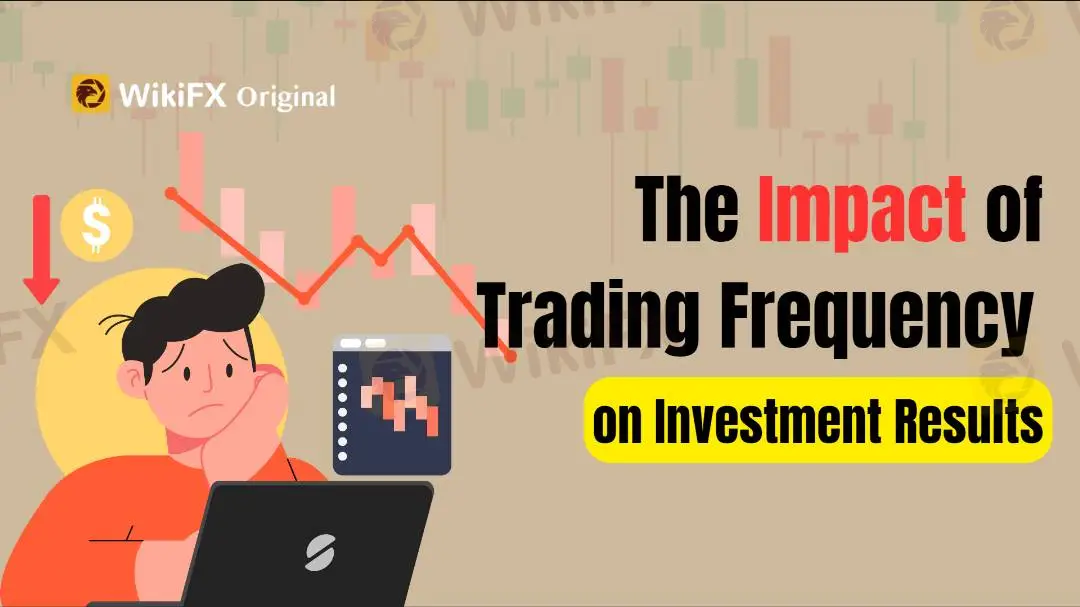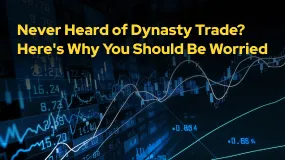简体中文
繁體中文
English
Pусский
日本語
ภาษาไทย
Tiếng Việt
Bahasa Indonesia
Español
हिन्दी
Filippiiniläinen
Français
Deutsch
Português
Türkçe
한국어
العربية
The Impact of Trading Frequency on Investment Results
Abstract:Many individuals who incur losses share a common trait. They often either trade excessively or too infrequently because they fear trading at a loss.
Many individuals who incur losses share a common trait. They often either trade excessively or too infrequently because they fear trading at a loss.

Trading excessively
Excessive trading is one of the major factors leading to losses. In any 12-month market cycle, there are typically 4 to 6 months with clear trends. This means that any fluctuations during those periods are predictable and rational, allowing for profitable gains in a short timeframe.
Novices often become complacent in favorable situations. One survey showed that beginners tend to hold their positions twice as long when they achieve a 5% profit compared to when they incur a 5% loss. However, a 5% price movement is insufficient to determine the trend of a trade.
A prudent choice is to hold cash or invest in high-quality blue-chip stocks that you plan to keep for years. Unfortunately, many beginners become emboldened by successful profits and start seeking more gains every day, disregarding the fact that markets often experience larger swings before stabilizing.
In such cases, their profits are gradually eroded, resulting in a significant reduction in net returns.

Trading too little
Conversely, there are also many beginners who trade too infrequently. They only execute trades when all conditions align perfectly. Such a approach may suit long-term investments, those held for three years or more. However, for short-term trading, it means missing out on numerous profitable opportunities.
In the previously mentioned scenarios, overconfidence and greed clouded the judgment of novices. In the current situation, fear prevents them from entering trades due to the fear of losses. Consequently, they wait for clearer trends before entering the market, often right when the market begins to reverse!
Fearful beginners wait for the market to stabilize significantly before trading. Consequently, they can only benefit from the already slowed upward momentum. Assuming they manage to capture one-fourth of the profits from that uptrend, they achieve a 20% return. At first glance, this may seem like a decent gain, but the subsequent trades might lead to losses.
If an investor who achieved an 80% return incurs a 5% loss in each of the next five trades, they still have a respectable 45% return. Moreover, those five trades offer them opportunities for future profits. On the other hand, an investor who only gained a 20% return will not be able to execute five more trades, potentially leading to losses in their investment portfolio.
Keep your emotions in check
Legendary billionaire Warren Buffett often advises people to learn how to manage their emotions before managing their money. A trader's emotions play a significant role in their trading results.
That's why you should constantly strive to control your emotions and avoid letting fear and greed influence your chances of earning maximum profits. Once you can master your emotions while investing in any instrument, you'll have a clear mindset when investing in other trading tools.
When the market is steadily rising, you must move forward boldly; when the market is sideways, you must proceed cautiously.

Before conducting any trades, be sure to search for the broker's ratings on WikiFX to preliminarily determine if it is a blacklisted platform.
Looking to invest in US stocks, forex, and futures but worried about scams? Find the most comprehensive brokerage information here.
Prior to depositing funds, make sure to download the anti-fraud 165: WikiFX APP to safeguard your capital.
Disclaimer:
The views in this article only represent the author's personal views, and do not constitute investment advice on this platform. This platform does not guarantee the accuracy, completeness and timeliness of the information in the article, and will not be liable for any loss caused by the use of or reliance on the information in the article.
Read more

Never Heard of Dynasty Trade? Here's Why You Should Be Worried
Have you heard this name before? No , it’s time you do because staying unaware could cost you. This platform is currently active in the forex trading and has been linked to several suspicious activities. Even if you’ve never dealt with it directly, there’s a chance it could reach out to you through ads, calls, messages, or social media. That’s why it’s important to know the red flags in advance.

Want to Deposit in the EVM Prime Platform? Stop Before You Lose It ALL
Contemplating forex investments in the EVM Prime platform? Think again! We empathize with those who have been bearing losses after losses with EVM Prime. We don't want you to be its next victim. Read this story that has investor complaints about EVM Prime.

WEEKLY SCAM BROKERS LIST IS OUT! Check it now
If you missed this week's fraud brokers list and are finding it difficult to track them one by one — don’t worry! We’ve brought together all the scam brokers you need to avoid, all in one place. Check this list now to stay alert and protect yourself from fraudulent brokers.

Catch the Latest Update on BotBro & Lavish Chaudhary
BotBro, an AI-based trading platform, became popular in India in 2024—but for negative reasons. Its founder, Lavish Chaudhary, who gained a huge following by promoting it heavily on social media. Since then, he has become well-known, but for many controversies. Let’s know the latest update about Botbro & Lavish Chaudhary.
WikiFX Broker
Latest News
Global week ahead: Crunch time for trade talks as Trump's deadline nears
Top Wall Street analysts recommend these dividend stocks for regular income
Stock futures rise as U.S.-EU trade deal kicks off a hectic week for markets: Live updates
EU chief to meet Trump in Scotland in push to avoid a transatlantic trade war
Trump's trade deals and tariffs are on the chopping block in court. What happens next
AI is radically changing entry-level jobs, but not eliminating them
Currency Calculator


